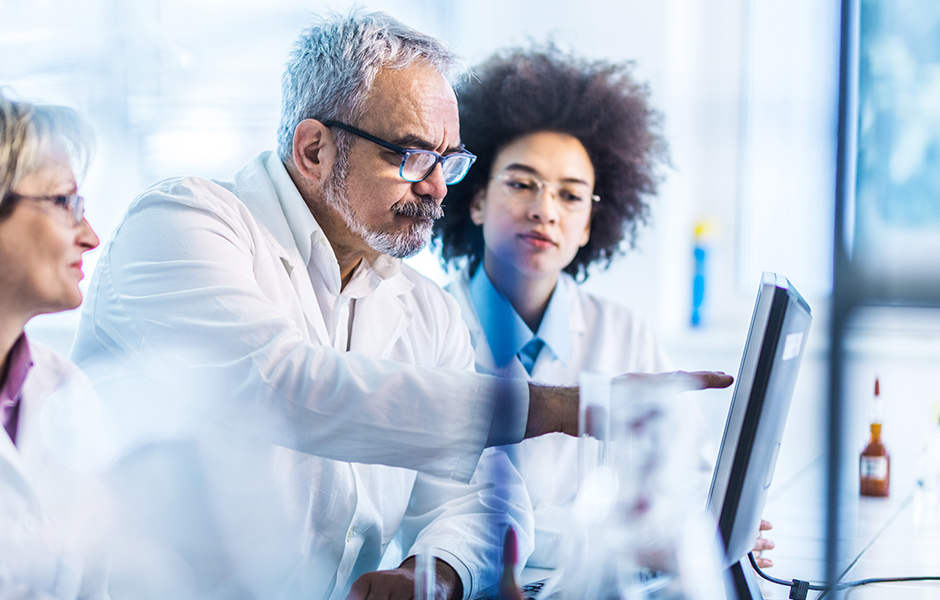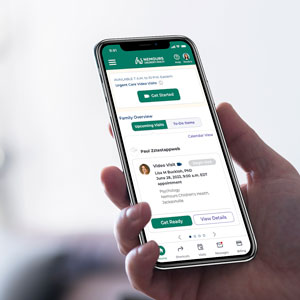Current Studies
With a mission to provide groundbreaking research and exceptional clinical care, we are focused on improving the lives of children with neurodevelopmental and musculoskeletal disorders. Some of our significant research projects are highlighted here.
Force-Driven Instrumentation for Leg Lengthening
Sometimes children develop with one leg or one arm shorter than the other. To correct this problem, orthopedic surgeons can perform a procedure called distraction osteogenesis to lengthen the bone in the shorter limb of a child whose bones are still developing. Typically, surgeons perform an osteotomy (remove part of the bone) and then distract (separate) the divided bone segments gradually so that new bone tissue forms to bridge the gap.
The rate of lengthening is usually held constant (about 1 millimeter per day) and does not consider variations in patients. But because children grow at their own pace, the constant force of the lengthening might be too great or too little at a given time, causing pain and possible damage to tissues as they grow. Research scientists and pediatric orthopedic surgeons at Nemours Pediatric Engineering Research Lab, part of the Center for Orthopedics Research and Development, are changing that.
We’re working on a method to measure the forces in the distraction zone (the area where limb lengthening occurs) using a sensor and vary the distraction rate (the amount of force that separates the bone) automatically. We hope this ability to adjust the lengthening forces will produce better results, with fewer problems and less discomfort for the child.
Investigators
- William G. Mackenzie, MD
- Tariq Rahman, PhD
- Jinyong Wee, PhD
- Rahamim Seliktar, PhD, Drexel University
- Robert E. Akins, PhD
- Dean Richardson, DVM, University of Pennsylvania
- David Levine, DVM, University of Pennsylvania
Wilmington Robotic EXoskeleton (WREX)
Children with neuromuscular disease often have difficulty moving their arms and performing activities of daily living due to muscle weakness. Wilmington Robotic EXoskeleton (WREX) is an arm orthosis that helps children with very little residual strength to move their arms in space. It is primarily intended for people with muscular dystrophy, spinal muscular atrophy, and arthrogryposis in which the distal muscles (those farther away from the joint) are less affected and sensation remains intact.
WREX is a two-segment device that uses elastic bands to help a child move the arm in 3-D space. It allows full passive range of motion of the arm and provides a sense of flotation that assists in voluntary movement. It can easily be adjusted to accommodate a child’s size, weight, and arm length. WREX is typically mounted to a wheelchair. When attached to a body jacket, it can also help children with arthrogryposis walk independently. WREX was conceived and developed at Nemours Children’s Hospital, Delaware and is being sold by JAECO Orthopedics. It can also be found in the Patterson Medical catalogue.
WREX II, the next generation currently under development, has easily adjustable link lengths and anti-gravity lift. It can also be switched from the right to the left hand and is enclosed in a plastic cover. WREX II is motorized so a user can lift heavier objects and overcome profound weakness. The motors assist the rubber bands in creating just the right tension to lift the arm.
Investigators
The Cricket, a Brace Compliance Sensor
For most children with idiopathic scoliosis, spinal bracing has been the mainstay of conservative treatment to halt the progression of moderate idiopathic curves. But for the brace to work properly, the child has to closely follow a prescribed brace-wearing schedule.
Most studies on the effectiveness of these spinal orthoses (braces) have relied on medical records and after-the-fact phone interviews to determine each child’s average daily brace-wear time. Because this information is subjective, Nemours researchers looked for a way to measure brace-wear compliance more accurately, without delays and subjectivity.
They developed a compliance sensor that records brace-wear time objectively. From this early design, they designed an improved compliance sensor called the Cricket. The sensor is sealed, self-contained, and can be obtained with a small screen that provides information on average hours the brace is worn. The Cricket was manufactured in partnership with Creative MicroDesigns and is being sold commercially by Boston Brace.
Investigator
Therapies for Managing Duchenne Muscular Dystrophy
What medications work best to slow the progression of symptoms for children with Duchenne muscular dystrophy? Research scientists at Nemours Children’s Hospital in Orlando, are preparing to participate in a number of studies that compare results obtained with different approaches. The research team will be investigating which steroids and other medications are most effective in managing symptoms of Duchenne muscular dystrophy among children of different ages.
Auditory Processing Disorders (APD) in Children
It’s one thing to hear normally in a quiet environment. But in a noisy room, some people with auditory processing disorders (APDs) have trouble focusing on one sound and ignoring the background sounds. APD can be a problem for some children, who might struggle academically because they have difficulty understanding what teachers and classmates are saying.
Researchers at the Auditory Physiology and Psychoacoustics Laboratory (APPL) are working with audiologists and other specialists at Nemours Children’s Hospital, Delaware to investigate the neurological pathways that translate sounds into information. They hope to uncover some of the causes of APD – and ways to train the brain to recognize speech in noisy environments. Considering that one in 20 school-age children has some form of APD, the implications of this research could be huge.
Auditory Neuropathy Spectrum Disorder (ANSD) in Children
Researchers at the Auditory Physiology and Psychoacoustics Laboratory (APPL) are starting to gain insights into a range of neurodevelopmental issues called Auditory Neuropathy Spectrum Disorders (ANSD). Children with ANSD experience a form of hearing loss caused when the nerves connecting the inner ear to the brain become damaged or when the cells connected to the auditory nerve are not functioning.
Working with otolaryngologists (ENT specialists), audiologists, speech pathologists, neurologists, geneticists and medical imaging technicians, our investigators are looking closely at physical causes of this multi-faceted timing disorder. We’ve discovered a number of conditions that might contribute to a child’s risk of developing ANSD, and we’re investigating individualized ways of managing the disorder.





